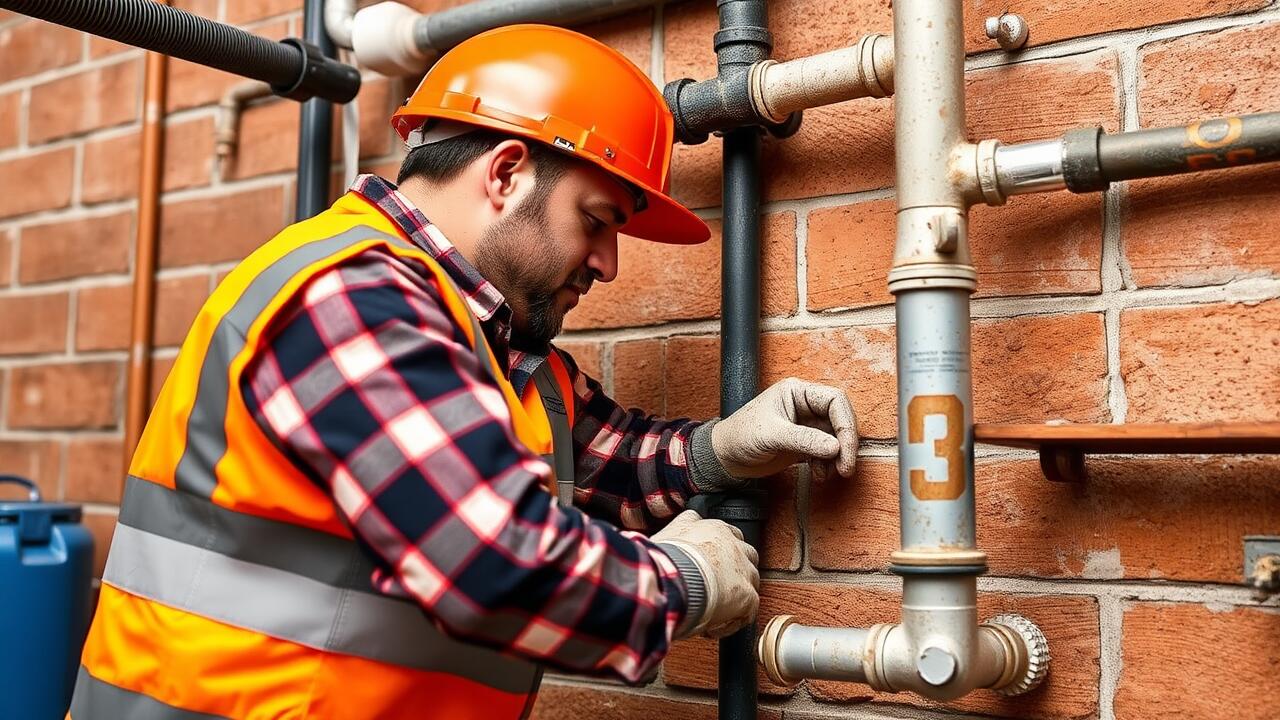
Thermal Expansion and Flexibility
When considering thermal expansion and flexibility, different materials exhibit distinct behaviors. PVC, for instance, is known for its rigidity but can expand significantly with temperature fluctuations. Copper pipes, while sturdy, also expand and contract, which might lead to stresses in joints over time. PEX remains the most flexible option, allowing for greater movement without the risk of rupturing. This flexibility makes it ideal for changing temperatures typically seen in plumbing systems.
In the context of Pipe installation in Echo Park, Los Angeles, these characteristics become particularly relevant. The region experiences varying temperatures throughout the year, which can challenge less flexible materials. PEX's adaptability helps mitigate potential issues associated with temperature changes, while PVC and copper may require additional planning to accommodate their expansion properties during installation. Understanding these factors is crucial for achieving a reliable and long-lasting plumbing system.
Understanding Movement and Temperature Effects
When considering pipe options, understanding how materials respond to temperature changes and movement is essential. PVC, for instance, has a high coefficient of thermal expansion, which means it can expand and contract significantly with temperature fluctuations. This characteristic can lead to issues such as joint separation or cracking if the installation does not accommodate movement. In regions like Echo Park, Los Angeles, where temperatures can vary widely, careful attention to these factors during planning and installation becomes crucial.
Copper pipes exhibit minimal expansion compared to PVC, but they are not immune to the effects of temperature changes. While their rigidity offers stability, it can also result in stress fractures if the system is not designed to manage thermal shifts. PEX, on the other hand, offers flexibility that allows it to absorb movement without detrimental effects. This flexibility is beneficial in dynamic environments, making PEX an increasingly popular choice in pipe installation in Echo Park, Los Angeles, where adapting to temperature variations can enhance the reliability and longevity of plumbing systems.
Impact on Water Quality
Several factors influence water quality when it comes to piping materials. PVC pipes, while resistant to corrosion and chemical leaching, can still release volatile organic compounds into the water supply, especially if used in warmer climates. Copper pipes, on the other hand, can contribute to metal leaching, particularly if the water has low pH or is soft. Regular testing is essential to monitor potential contaminants and ensure that the water remains safe for consumption.
PEX pipes offer some advantages regarding water quality, as they do not corrode or scale, maintaining better water taste and odor. Still, concerns about the leaching of additives used during manufacturing linger among consumers. In regions like Van Nuys, Los Angeles, where pipe installation relies on balancing durability and safety, awareness of how material choices impact water quality remains paramount. Homeowners and professionals must be informed about these factors when making decisions about plumbing systems.
Analyzing Potential Contaminants
When considering pipe materials, the potential for contaminants to leach into water supplies is critical. PVC pipes, while popular for their affordability and ease of installation, can release harmful chemicals during prolonged exposure to heat or sunlight. Copper pipes are known to pose a risk of copper leaching, which can affect both taste and health if water sits stagnant for long periods. This is particularly important in areas like Echo Park, Los Angeles, where water quality standards must be carefully monitored to ensure public health.
PEX piping offers some advantages in this regard, as it is less likely to leach contaminants compared to PVC and copper. However, concerns about the installation process and how the material interacts with various water sources remain. As pipe installation in Echo Park, Los Angeles, and similar locations continues to evolve, understanding the implications of each material on water safety is essential for homeowners and plumbers alike. Consistent testing and adherence to local regulations help mitigate risks associated with potential contaminants.
Environmental Considerations
When evaluating the environmental considerations of pipe materials, factors such as sustainability and energy consumption play significant roles. PVC, while lightweight and cost-effective, poses challenges in terms of recyclability. Manufacturing processes often involve chemical pollutants. Copper is durable and recyclable but mining and production can lead to significant environmental disruption. PEX offers flexibility and is easier to install, but its long-term effects on environmental health remain uncertain.
In regions like Echo Park, Los Angeles, local climate and environmental policies impact material choice. Sustainable practices encourage the use of materials that minimize ecological footprints. Evaluating the entire lifecycle of each pipe option is crucial. From production to disposal, the ecological implications should guide decisions in pipe installation. Understanding these factors ensures that choices made today will support a healthier environment for future residents.
Assessing Sustainability and Recyclability
The sustainability and recyclability of pipe materials play an essential role in determining their environmental impact. PVC, while widely used due to its cost-effectiveness and durability, raises concerns about the production process and long-term disposal. Copper, on the other hand, is a natural material and can be recycled without losing quality, making it a more sustainable choice in regions where recycling systems are robust. PEX, a relative newcomer in piping, is flexible and requires less energy to produce than other materials; however, its recyclability is still limited in many areas, including during pipe installation in Echo Park, Los Angeles.
Local regulations and available recycling programs significantly influence the overall sustainability of piping materials. In urban areas, like Echo Park, the increase in renovations and new constructions highlights the importance of choosing eco-friendly options. Projects that prioritize materials like copper and some PEX systems can contribute positively to local ecology, especially if recycling facilities are accessible. As awareness of environmental issues grows, making informed decisions about pipe installation can lead to more sustainable practices in the plumbing industry.
FAQS
What are the main differences between PVC, copper, and PEX pipes?
PVC pipes are lightweight, resistant to corrosion, and ideal for drainage systems. Copper pipes are durable, offer excellent water quality, and can withstand high temperatures. PEX pipes are flexible, easy to install, and provide good resistance to temperature changes.
How does thermal expansion affect PVC, copper, and PEX pipes?
PVC has a higher thermal expansion rate compared to copper, which can lead to warping or shifting in extreme temperatures. Copper is more rigid and less prone to expansion but can still contract in cold conditions. PEX is designed to handle thermal expansion and contraction effectively due to its flexibility.
Can the type of pipe used impact water quality?
Yes, the type of pipe can significantly affect water quality. Copper pipes can leach copper into the water, while PVC pipes may release harmful chemicals if not made with high-quality materials. PEX is generally considered safe but should be certified for drinking water use to ensure no contaminants leach into the water supply.
Are there environmental considerations when choosing between PVC, copper, and PEX?
Yes, all three materials have different environmental impacts. PVC is not biodegradable and can be challenging to recycle. Copper is a natural resource but requires mining, which can be environmentally damaging. PEX is made from plastic, but it is often more energy-efficient to produce and can be recycled in some areas.
Which type of pipe is the most cost-effective for plumbing projects?
Generally, PVC is the most cost-effective option for plumbing projects due to its low material and installation costs. PEX is also affordable and offers savings on labor costs due to its ease of installation. Copper is typically the most expensive choice, both in terms of materials and installation.



